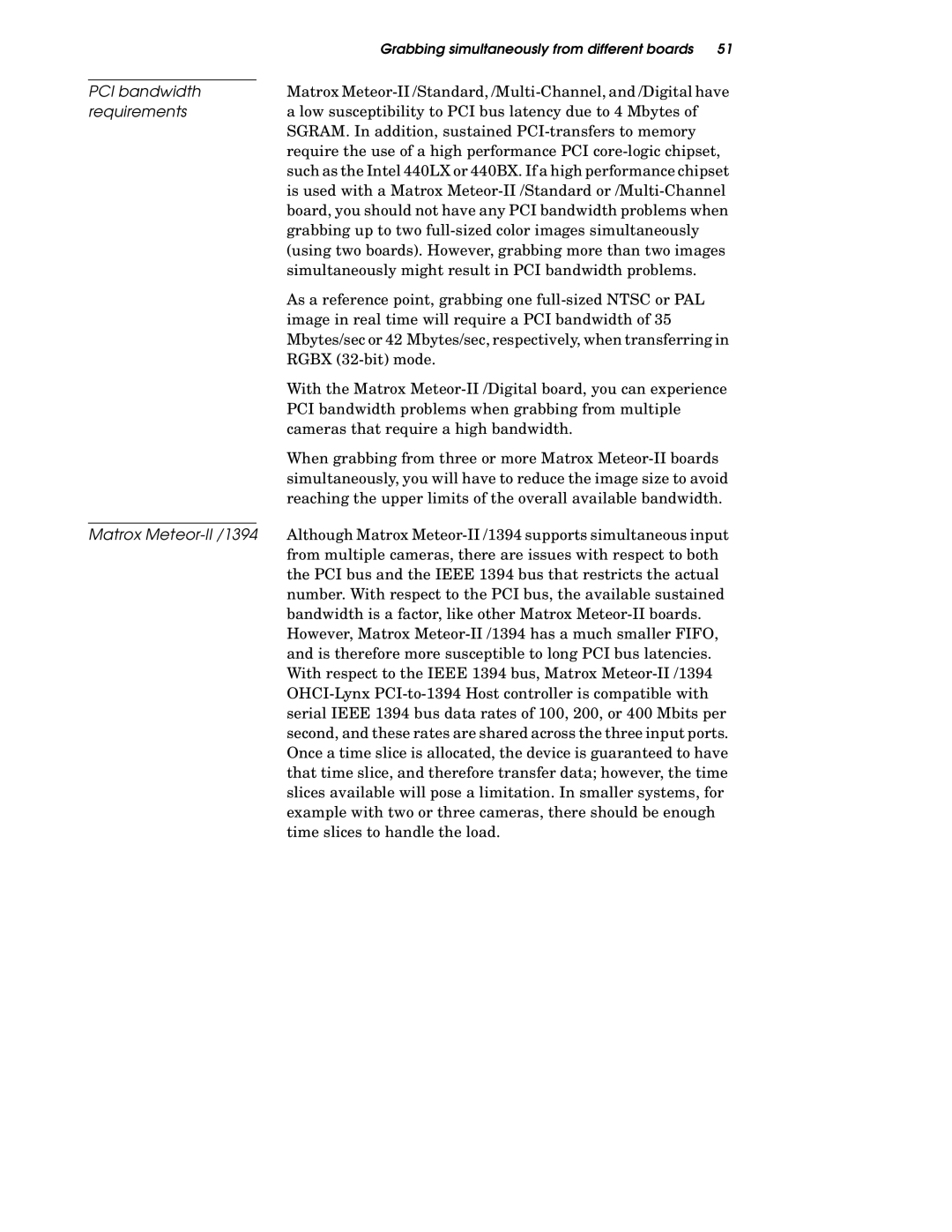|
| Grabbing simultaneously from different boards 51 |
|
| Matrox |
PCI bandwidth | ||
requirements | a low susceptibility to PCI bus latency due to 4 Mbytes of | |
|
| SGRAM. In addition, sustained |
|
| require the use of a high performance PCI |
|
| such as the Intel 440LX or 440BX. If a high performance chipset |
|
| is used with a Matrox |
|
| board, you should not have any PCI bandwidth problems when |
|
| grabbing up to two |
|
| (using two boards). However, grabbing more than two images |
|
| simultaneously might result in PCI bandwidth problems. |
|
| As a reference point, grabbing one |
|
| image in real time will require a PCI bandwidth of 35 |
|
| Mbytes/sec or 42 Mbytes/sec, respectively, when transferring in |
|
| RGBX |
|
| With the Matrox |
|
| PCI bandwidth problems when grabbing from multiple |
|
| cameras that require a high bandwidth. |
|
| When grabbing from three or more Matrox |
|
| simultaneously, you will have to reduce the image size to avoid |
|
| reaching the upper limits of the overall available bandwidth. |
|
| Although Matrox |
Matrox | ||
|
| from multiple cameras, there are issues with respect to both |
|
| the PCI bus and the IEEE 1394 bus that restricts the actual |
|
| number. With respect to the PCI bus, the available sustained |
|
| bandwidth is a factor, like other Matrox |
|
| However, Matrox |
|
| and is therefore more susceptible to long PCI bus latencies. |
|
| With respect to the IEEE 1394 bus, Matrox |
|
| |
|
| serial IEEE 1394 bus data rates of 100, 200, or 400 Mbits per |
|
| second, and these rates are shared across the three input ports. |
|
| Once a time slice is allocated, the device is guaranteed to have |
|
| that time slice, and therefore transfer data; however, the time |
|
| slices available will pose a limitation. In smaller systems, for |
|
| example with two or three cameras, there should be enough |
|
| time slices to handle the load. |
Page 51
Image 51
